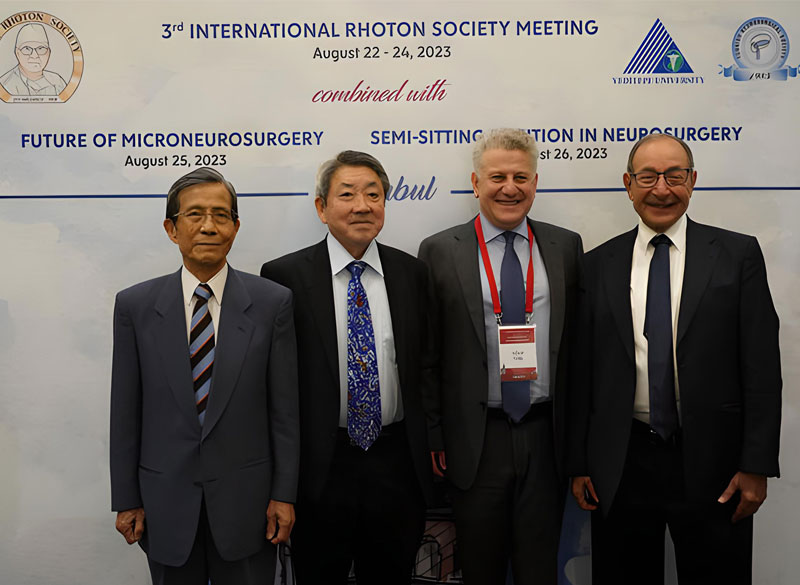Future of Neurosurgery Discussed in Istanbul

Between August 22-26, 2023, leading figures in brain surgery from Türkiye and around the world shared their experiences with colleagues at three major international meetings attended by nearly 500 participants. Discussions at these gatherings centered on "The Future of Microneurosurgery," "The International Rhoton Society Meeting," and "Semi-Sitting Position in Brain Surgery."
These meetings, led by Prof. Dr. Uğur Türe, Head of the Department of Brain and Nerve Surgery at Yeditepe University and organized in collaboration with the Turkish Neurosurgical Society and Yeditepe University, highlighted the significant topic of "Brain Surgeries in a Semi-Sitting Position." Prof. Dr. Türe shared the advantages of performing brain surgeries, especially on the back and the neck areas, with the patient in a semi-sitting position.
Prominent attendees included Prof. Dr. Toshio Matsushima, President of the International Rhoton Society, Prof. Dr. Shigeaki Kobayashi, a leading figure in brain anatomy, and Prof. Dr. Ossama Al-Mefty from the Neuroscience Center at Harvard Medical School's Brigham and Women's Hospital.
Prof. Dr. Ossama Al-Mefty pointed out that many brain surgeries, previously considered highly risky, are now performed with almost zero risk thanks to microsurgery, a method taught to the world by Turkish Neurosurgeon Prof. Dr. Gazi Yaşargil. Prof. Dr. Mefty emphasized the high standing of Turkish Neurosurgery globally, stating, "Today, many great neurosurgeons are inspired by Prof. Dr. Gazi Yaşargil. He is like Prometheus, carrying the fire of life in the field of microsurgery."
The contributions of American surgeon Prof. Dr. Albert L. Rhoton to the field of brain surgery, mainly through his anatomy studies, were also highlighted. It was underlined that Prof. Dr. Gazi Yaşargil played a crucial role in applying Rhoton's work to surgical practice.
SEMI-SITTING POSITION OFFERS SIGNIFICANT ADVANTAGES IN SURGERIES ON THE BACK OF THE BRAIN
Prof. Dr. Uğur Türe, a disciple of Prof. Dr. Gazi Yaşargil, mentioned that this was the first scientific meeting to discuss a surgical position, highlighting the benefits of operating on patients in a semi-sitting position. This position, widely used in the early days of neurosurgery but gradually abandoned, offers significant advantages, according to Prof. Dr. Türe. "In some surgeries, the brain remains softer and more visible in a semi-sitting position. The surgery field is clear, without blood or fluid. You can operate more comfortably using both hands. I prefer this position for certain surgeries, especially large tumors originating from the hearing nerve. Thanks to technological advancements, we've overcome its disadvantages, including the risk of air embolism in the venous system. Now, we can monitor even the smallest detail going toward the heart throughout the surgery using an ultrasound placed in the patient's mouth. This has been one of the most significant revolutions."